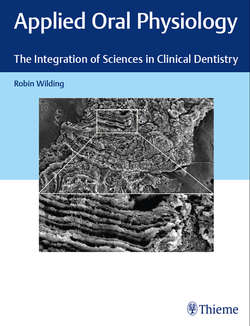Читать книгу Applied Oral Physiology - Robin Wilding - Страница 79
На сайте Литреса книга снята с продажи.
4.3.9 Dental Caries
ОглавлениеA shift in the oral environment, such as an increase in dietary sugar, causes an imbalance in the dominance of some key organism in the dental plaque, which has accumulated on enamel surfaces. A sudden supply of sugar causes those bacteria to flourish, which have a particular ability to uptake and metabolize sugar rapidly. Species such as the mutans streptococci along with other Lactobacillus species produce lactic acid as a by-product of metabolism (aciduric). This lactic acid may cause the pH of the dental plaque to fall below 1.5, a critical level, which begins to demineralize enamel crystals. This demineralization may be the beginning of dental caries, but of course such an outcome is purely associative, and of no apparent benefit to the pathobionts casing it. Of greater impact on the biofilm environment, of the rise in lactic acid, is the inhibition of other plaque organisms which are acid sensitive.
Dental plaque which is associated with dental caries has twice as much lactic acid and larger numbers of S. mutans than noncarious plaque (NCP). ▶ Table 4.1 summarizes these and other differences between NCP and carious plaque (CP). It should be noted that the change from NCP to CP is not due to one single organism, nor does it require the arrival of a new species, but merely a change in the hierarchy of organisms already present. There is a consortium of organism, which is at the forefront of the shift toward greater acidity of the biofilm, and they include the group of mutans streptococci, S. mutans, and Streptococcus sobrinus and lactobacilli. Actinomyces species are also involved in root caries. S. mutans is a keystone species which orchestrates these changes. From the data which come from artificial mouth experiments it seems as if the slight shift toward acidity promotes a shift in this hierarchy which rapidly gathers momentum.
